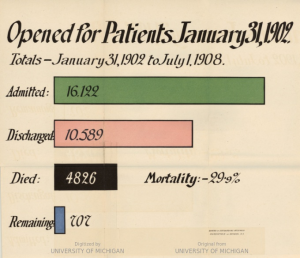In case you missed it, last week we were proud to host five posts from Tom Ewing’s Data in Social Context class at Virginia Tech. Each post was written by a group of students who selected and researched a topic centered on tuberculosis and public health data in the United States around the beginning of the twentieth century. The data they used came from the Medical Heritage Library collections and we were privileged to talk to the students via Skype and be able to work with them on their drafts.
The posts are collected here for ease of reference — we highly recommend all of them! Continue reading






